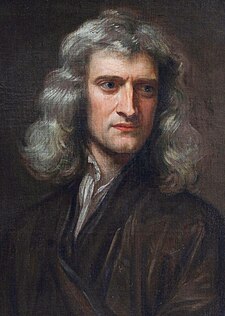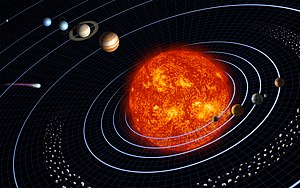People needed a breakthrough for all the mythological beliefs. It was the time when people required a logical truth that explained the outside world unknown to them. The sun, moon moving up and down remained a mystery except for in mythologies. Aristarchus of Samos(310-250 B.C) first put forward a theory that could explain the motion of the other celestial bodies of the sky. That was the Heliocentric theory. But at that geocentric world of time, people did not believe him.
Later, slowly, new scientists woke up who provided different methods to explain heliocentrism.
the first one was Nicolaus Copernicus.
The orbit of every planet is an ellipse with the Sun at one of the two foci.
A line joining a planet and the Sun sweeps out equal areas during equal intervals of time.[1]
The square of the orbital period of a planet is directly proportional to the cube of the semi-major axis of its orbit.


Later, slowly, new scientists woke up who provided different methods to explain heliocentrism.
the first one was Nicolaus Copernicus.
Copernicus
Using Copernicus' theory, Galileo Galilei also explained the heliocentricism, and was able discover one of Jupiter's brightest moon in 1609. He gave another breakthrough to the science of astrophysics.
His invention of the telescope helped many other scientists discover many fascinating things of the universe.
Johannes Kepler, in 1609, provided some laws which came to be known as Kepler's laws of planetary motion, mainly by getting data from observatory of Tycho Brahe.
He proposed three laws :
About a century later, Sir Isaac Newton provided a link between Kepler's laws and Galileo's dynamic motion only to discover that all the elements of the universe were held together by a same force called as the Gravity or the Gravitational Force


Sir Isaac Newton Gravitational Force that keeps the planets
in their orbits











0 comments:
Post a Comment